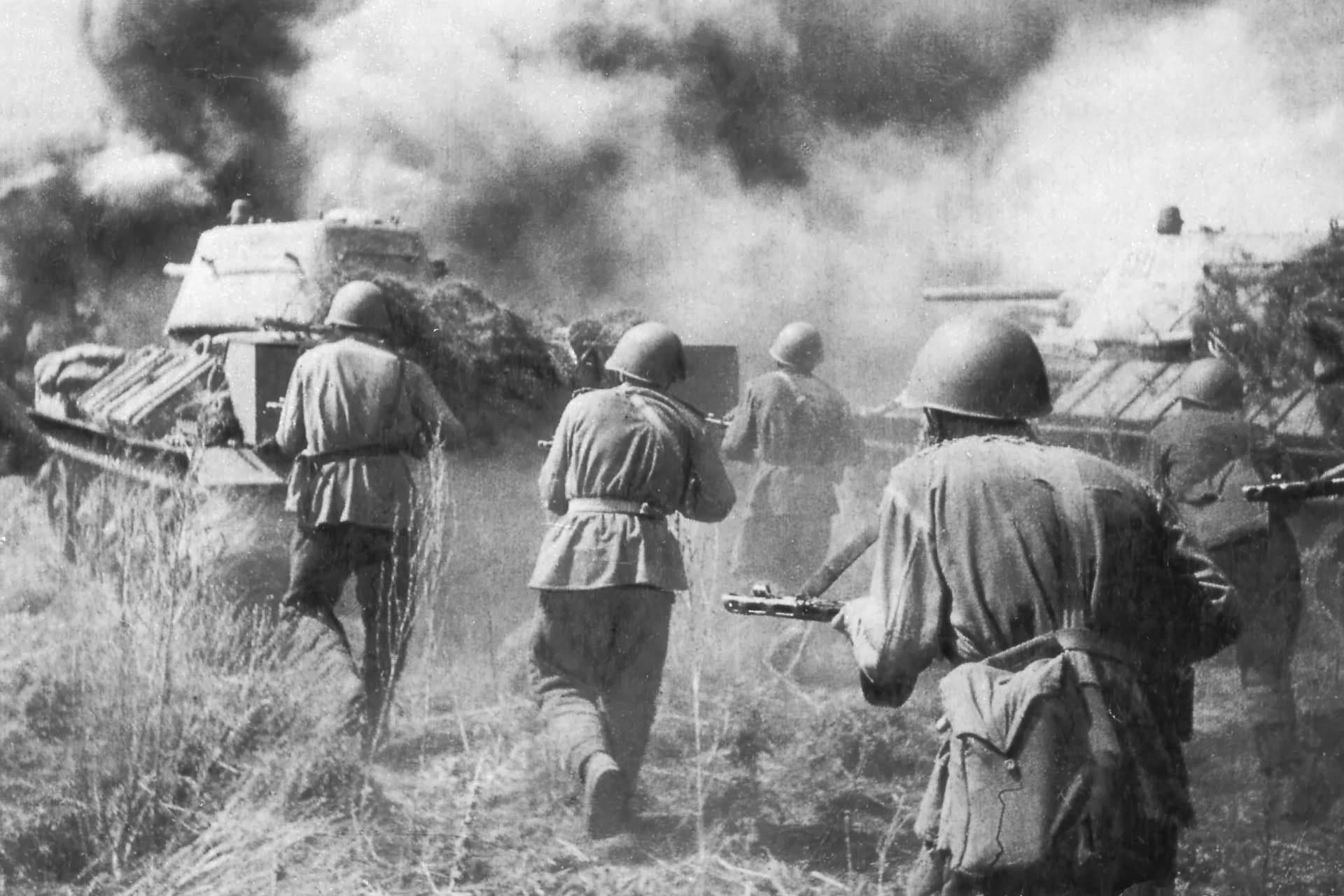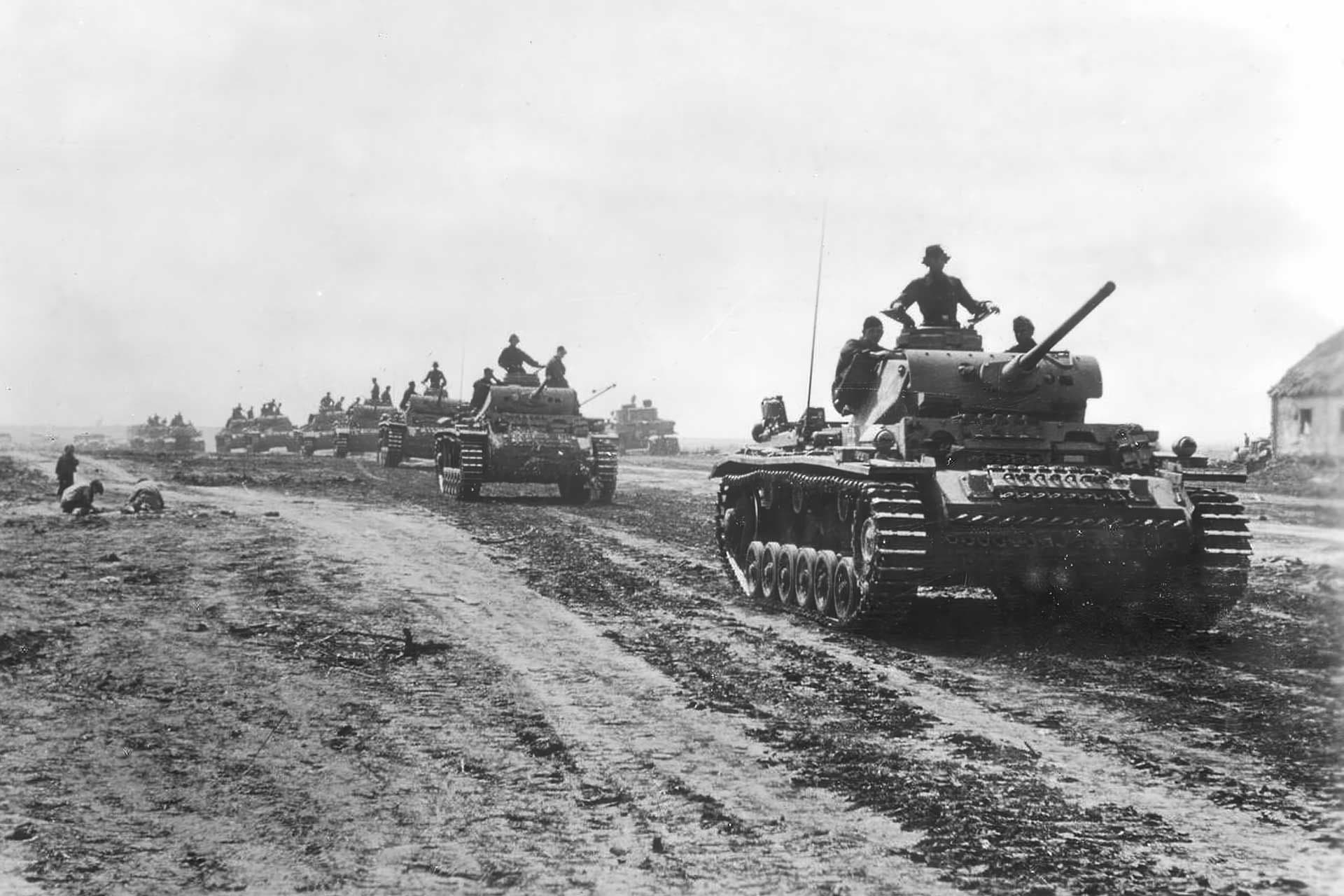The Battle of Kursk That Changed the War
Mahacaraka® Press
In the heat of a Russian summer in July 1943, amidst the endless wheat fields and rolling steppe of western Russia, the soil trembled under the weight of iron and ambition. The Battle of Kursk, which unfolded between 5 July and 23 August, marked a defining moment in the Second World War. It was not merely another clash on the Eastern Front; it was the largest tank battle in history, a struggle that demonstrated the evolving nature of modern warfare, and a turning point that would cripple Hitler’s hopes of regaining initiative in the East.
The seeds of the confrontation were sown in the aftermath of the German defeat at Stalingrad. That catastrophic loss during the winter of 1942–43 had shattered the aura of Wehrmacht invincibility. Yet, the German high command believed it could regain momentum with a decisive blow. Their eyes turned to the Kursk salient, a bulge in the Soviet lines that jutted westward for nearly 250 kilometres. Enveloping this salient from north and south, they hoped, would allow the Wehrmacht to encircle and destroy significant Soviet forces in a pincer movement.
The operation was codenamed Zitadelle (Citadel), and it involved some 900,000 German troops, nearly 3,000 tanks and assault guns, and over 2,000 aircraft. Facing them were over 1.9 million Red Army personnel, more than 5,000 tanks, and 3,000 aircraft. Both sides were acutely aware of what was at stake.
Unlike previous offensives where German forces often enjoyed the advantage of surprise, the Soviets were well informed of Hitler's intentions, thanks to an extensive intelligence network and insights from the British-provided Ultra decrypts. The Red Army, under Georgy Zhukov's strategic guidance, transformed the salient into a fortress. Layers of minefields, anti-tank ditches, trenches, and artillery emplacements were meticulously prepared. Defensive belts stretched deep into the Soviet rear, blunting German armoured thrusts before they could achieve breakthroughs.

The northern pincer, spearheaded by General Model’s Ninth Army, became bogged down in the face of determined resistance and brutal terrain. In the south, however, General Hoth’s Fourth Panzer Army, including the fearsome II SS Panzer Corps, made deeper progress. It was here, near the small village of Prokhorovka, that the battle reached its most ferocious crescendo.
On 12 July, Soviet and German armoured formations collided in close-quarters combat, with more than 1,000 tanks involved. The terrain, crisscrossed by gullies and bordered by forests, prevented the sweeping manoeuvres often associated with tank warfare. Instead, it was a brutal slugging match. Dust, fire, and twisted metal turned the fields into a hellish wasteland. Neither side gained a definitive upper hand, but the Germans, suffering high casualties and unable to break through, were forced to halt their advance.
What had begun as a bold German offensive devolved into a desperate defence. Soviet counteroffensives launched shortly after Prokhorovka pushed German forces back, not only from Kursk but across a vast swathe of occupied territory. Operation Rumyantsev and Operation Kutuzov liberated Belgorod, Orel, and Kharkov by late August. From this point onwards, the Wehrmacht would rarely regain the strategic initiative on the Eastern Front.
Technological and logistical factors played a crucial role. The Germans introduced new weapons such as the Panther and Tiger tanks, yet many suffered mechanical failures in the demanding Russian conditions. The Red Army, by contrast, fielded thousands of T-34s, less advanced on paper, but robust, easy to maintain, and perfectly suited to Soviet mass production.
The human cost was staggering. Soviet casualties, both military and civilian, exceeded 800,000. German losses surpassed 200,000, including irreplaceable veterans and officers. The scale of destruction left a scar on the Russian landscape, and on generations to follow.

Today, traces of the battle endure. In and around Kursk and Prokhorovka, war memorials, preserved trenches, and museum exhibits honour the sacrifice and struggle. The Prokhorovka Battlefield Museum hosts relics from the clash, including twisted tank remnants and personal effects of soldiers. The bell tower at the site, rising above the open fields, tolls not just in memory of victory but of the immense human toll.
The legacy of Kursk is multifaceted. Militarily, it showcased the ascendancy of Soviet operational art, particularly in combining defence-in-depth with timed counteroffensives. Politically, it cemented Stalin’s growing confidence and international prestige. Culturally, it remains a symbol of resilience, echoed in countless books, films, and oral histories.
Its scale and consequences continue to fascinate historians, not merely for its record-breaking armoured engagement, but for what it represented. Kursk did not merely halt a German offensive; it shifted the balance of the entire Eastern theatre. From here, the Red Army surged westward, and the road to Berlin, though still long and bloodied, became a march rather than a retreat.
In studying the Battle of Kursk, one does not merely confront a chapter of military history, but a moment in which human ingenuity, endurance, and suffering collided with brutal consequence. It remains one of the most crucial turning points of the Second World War, not only for the Soviet Union or Nazi Germany, but for the modern world it helped to shape.